Indulge your senses in a culinary adventure with Thai Red Curry (Gaeng Phed) This vibrant Thai dish promises a delightful explosion of flavors, marrying the heat of red curry paste with the creamy richness of coconut milk. Imagine tender chicken pieces or tofu perfectly cooked in an aromatic sauce, each bite bringing a taste of Thailand to your table. Ready to dive into the world of Thai cuisine? Keep reading to uncover the secrets of crafting this exquisite dish at home!
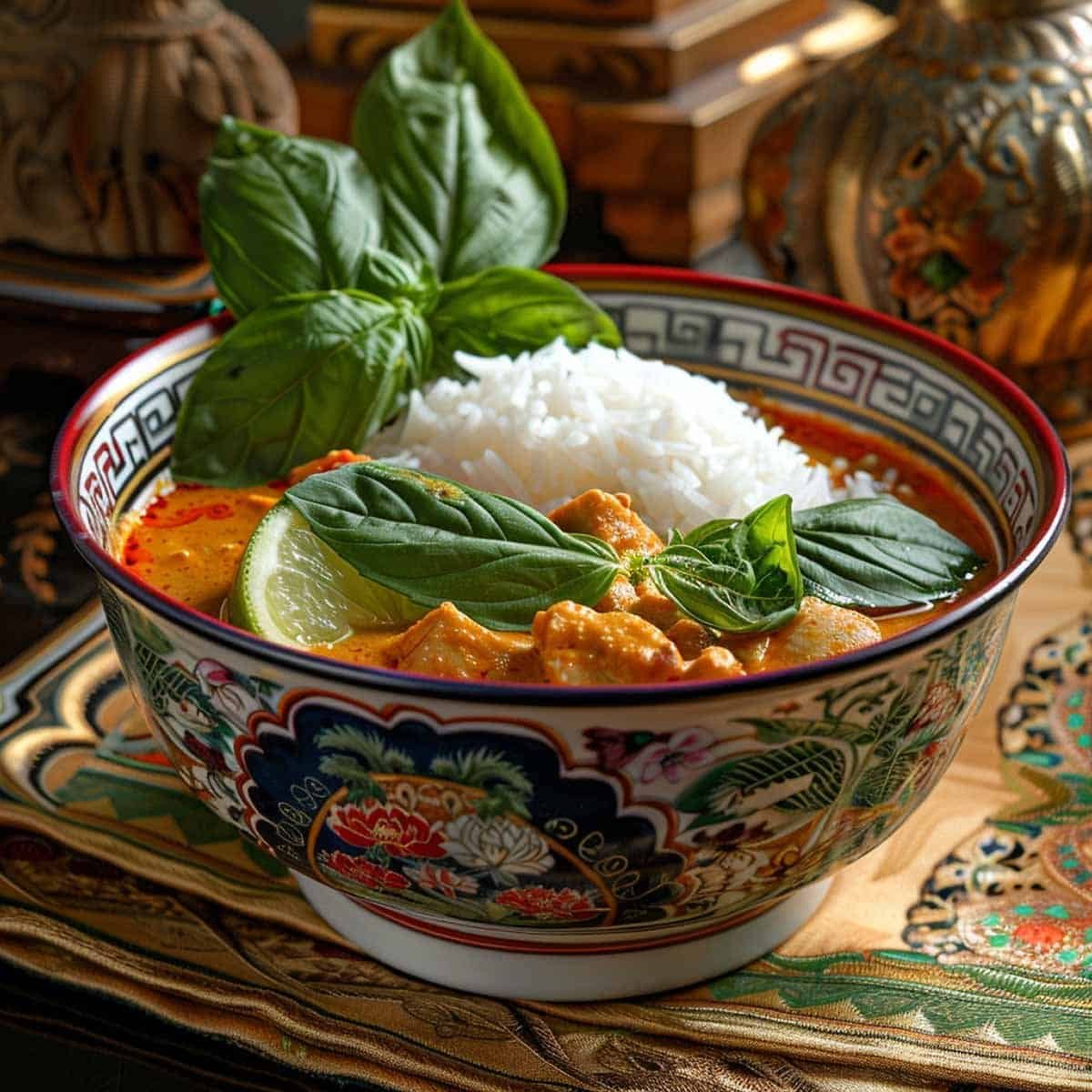
Background and Influence of Thai Red Curry (Gaeng Phed)
Thai Red Curry (Gaeng Phed) is revered in Thai culinary tradition and celebrated for its vibrant flavors and aromatic essence. Initially originating from Thailand's central plains, this dish reflects the rich cultural tapestry of Thai cuisine, which balances spicy, sweet, salty, and sour elements. Additionally, influenced by Indian and Chinese cooking styles, Thai red curry incorporates locally grown ingredients like fresh herbs, coconut milk, and various vegetables. Over time, this dish has become a staple in Thai households and restaurants worldwide, symbolizing the harmonious blend of tradition in Thai cooking.

Sawasdee Kha, and Hello
I am thrilled to have the opportunity to share my cherished recipe for Thai Red Curry (Gaeng Phed) with you! This aromatic and flavorsome dish holds a special place in my heart, taking me back to my childhood filled with rich cultural experiences. Specifically, the tantalizing aroma of the curry simmering on the stove brings back vivid memories of gatherings with family and friends. Furthermore, we were always surrounded by warmth and excitement as we anticipated enjoying this traditional and comforting meal together.
The vibrant red hue of the curry is captivating visually, while the aroma, a blend of fragrant spices and fresh herbs, is simply irresistible. The taste is a harmonious medley of spicy, sweet, and savory notes, with a creamy texture that envelopes your palate.
I am genuinely excited for you to try this recipe. It's more than just a meal; it's a journey to the heart of Thai cuisine. Please share your experience in the comments below—I can't wait to hear about your culinary adventure!

Welcome! I'm so glad you're here. Join me in making ThaiRed Curry (Gaeng Phed) , together—it's going to be delicious!
Essential Ingredients for Perfect Thai Red Curry (Gaeng Phed)
Thai Red Curry (Gaeng Phed), you'll need a blend of traditional Thai ingredients that create its unique flavor profile. The key components include red curry paste, which brings heat and spice. Additionally, coconut milk adds a rich, creamy texture. Fresh bell peppers and bamboo shoots add crunch, while kaffir lime leaves and basil infuse the curry with fragrant herbal notes. The balance of fish sauce and brown sugar ties everything together, creating a symphony of Thai flavors.
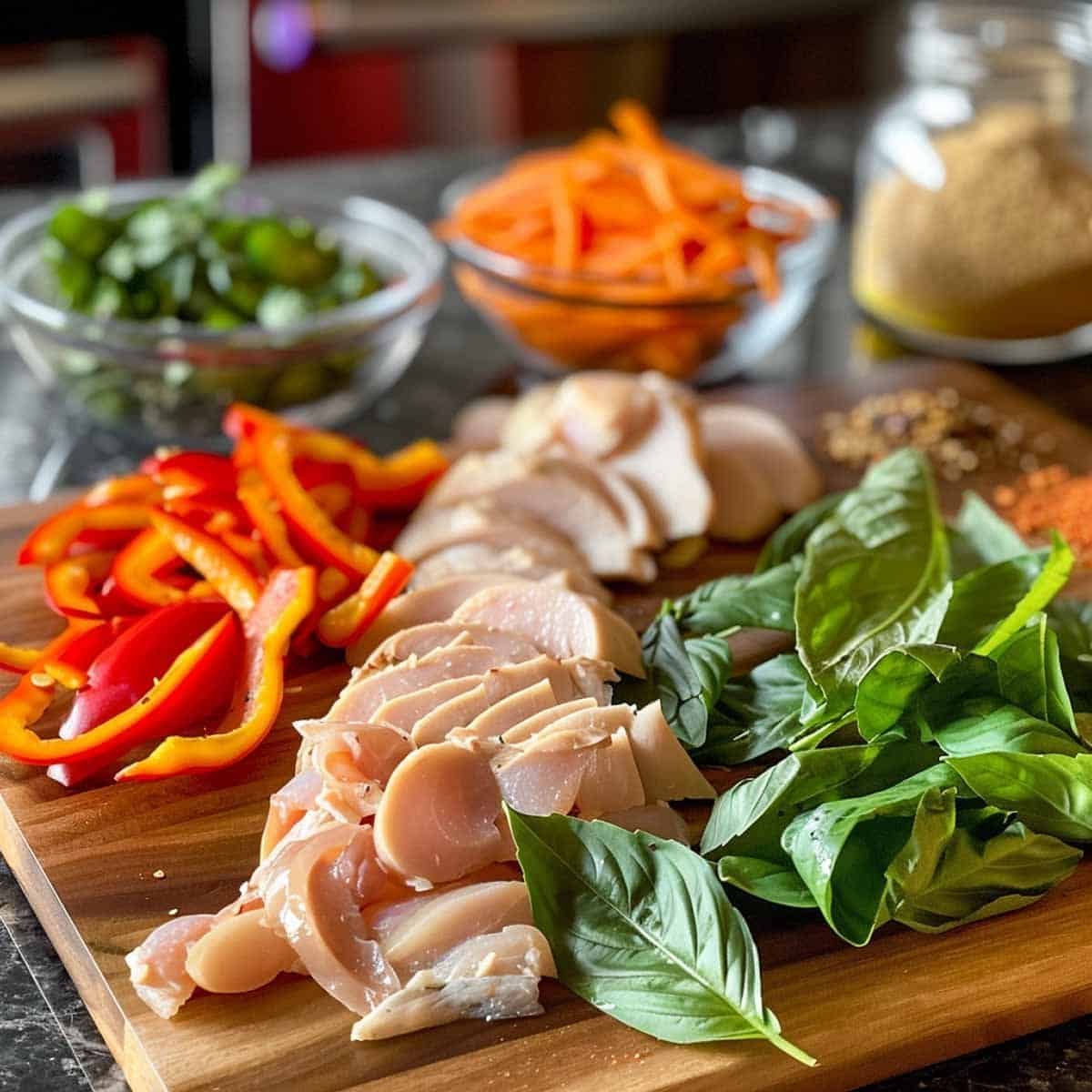
Crafting the Flavorful Curry Base
In a large saucepan, heat the vegetable oil over medium heat. Add the red curry paste, stirring constantly for 1-2 minutes until it releases its fragrant aroma. This crucial step enhances the paste's flavors, ensuring a rich, aromatic curry base.
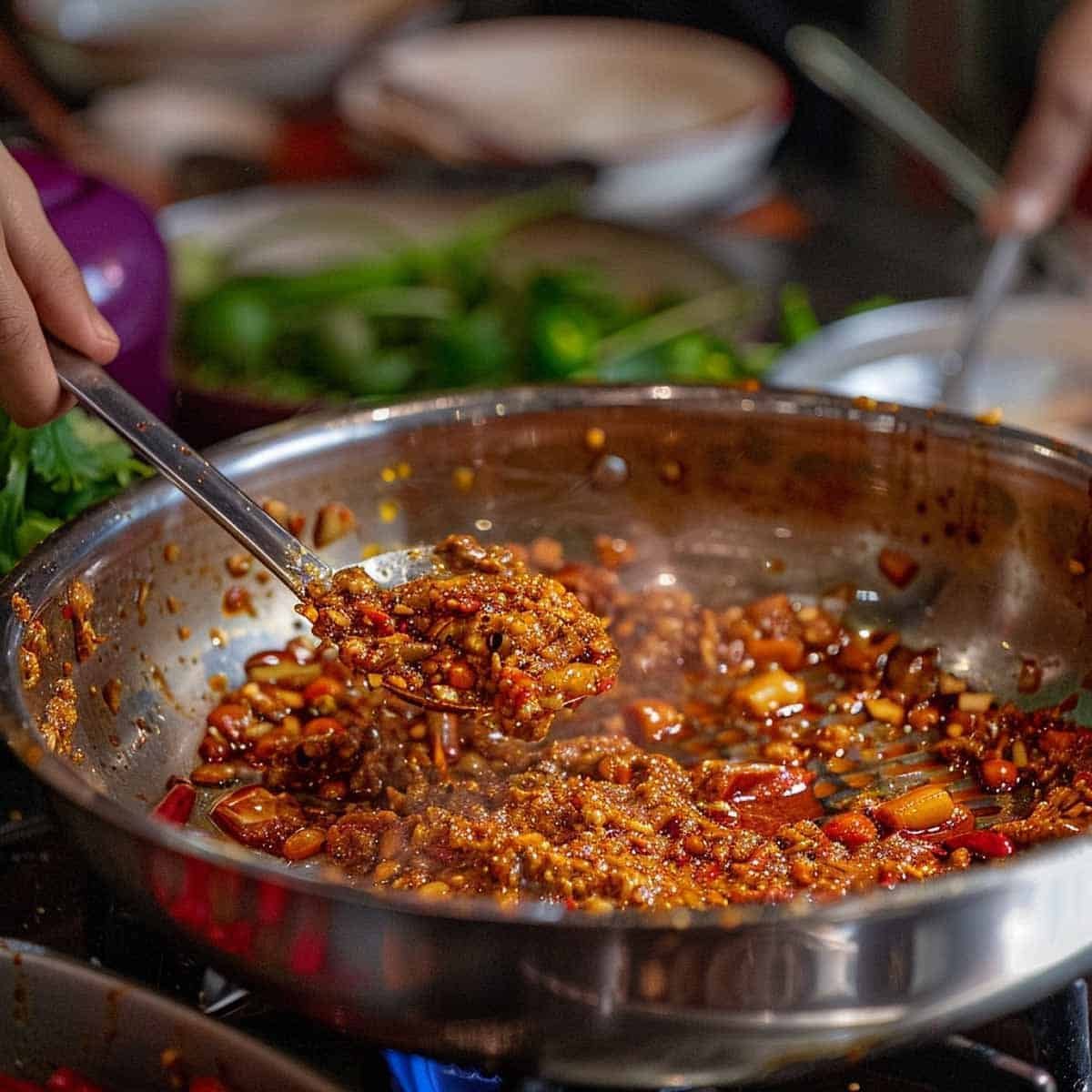
Cooking the Protein to Perfection
Add the thinly sliced chicken breast to the pan, stirring to coat it with the curry paste. Cook for 5-7 minutes until the chicken is no longer pink. If using tofu, gently mix to avoid breaking the pieces, cooking until lightly browned.
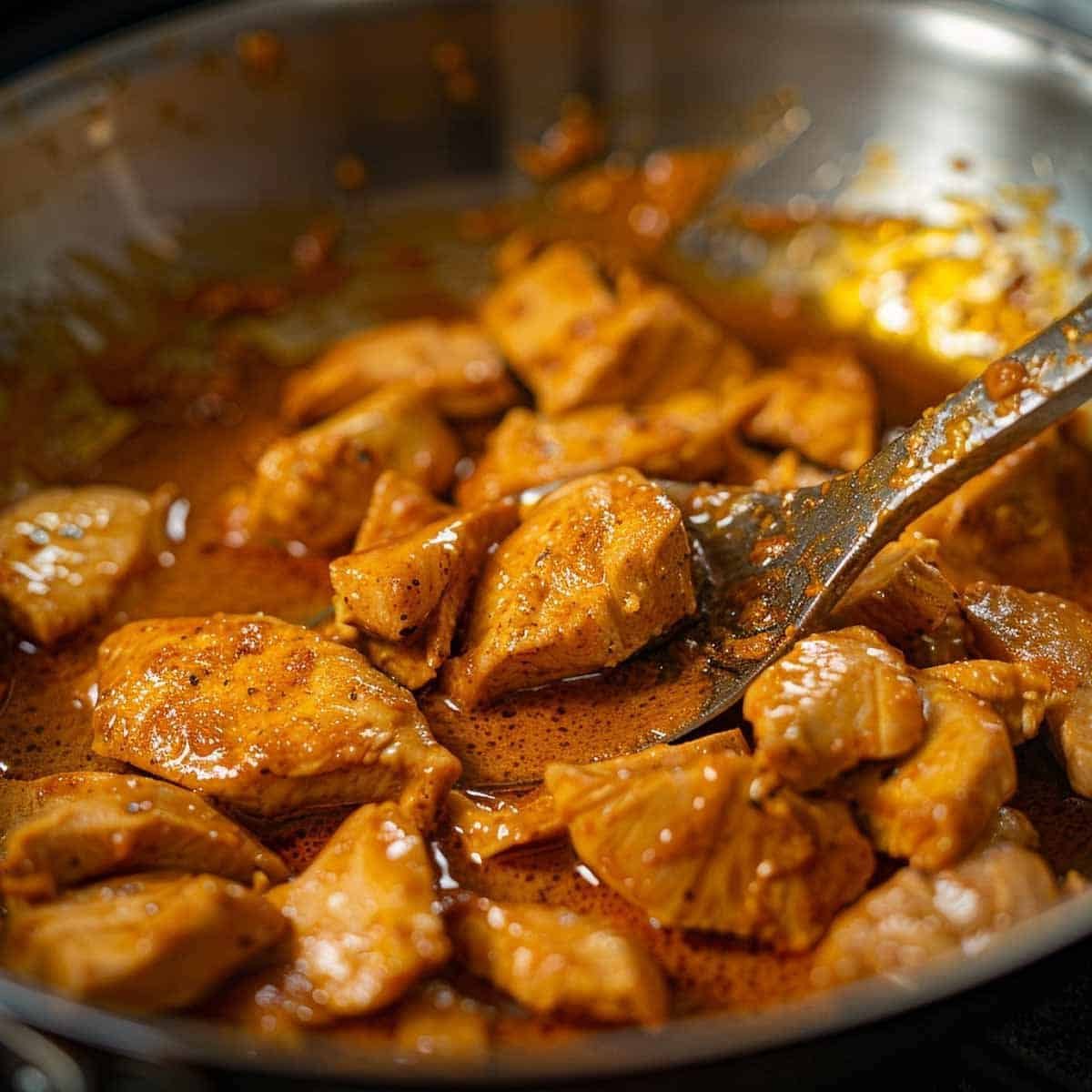
Creating the Sauce: Adding Vegetables and Seasoning
1.Pour in the coconut milk and chicken broth, stirring to combine. Bring the mixture to a gentle simmer, allowing the flavors to meld together beautifully. This step is essential for developing the curry's rich, creamy consistency.
2. Stir in the bell peppers, bamboo shoots, fish sauce, and brown sugar. Add the torn kaffir lime leaves and let the curry simmer for another 5-7 minutes until the vegetables are tender but still crisp and the flavors have deepened.
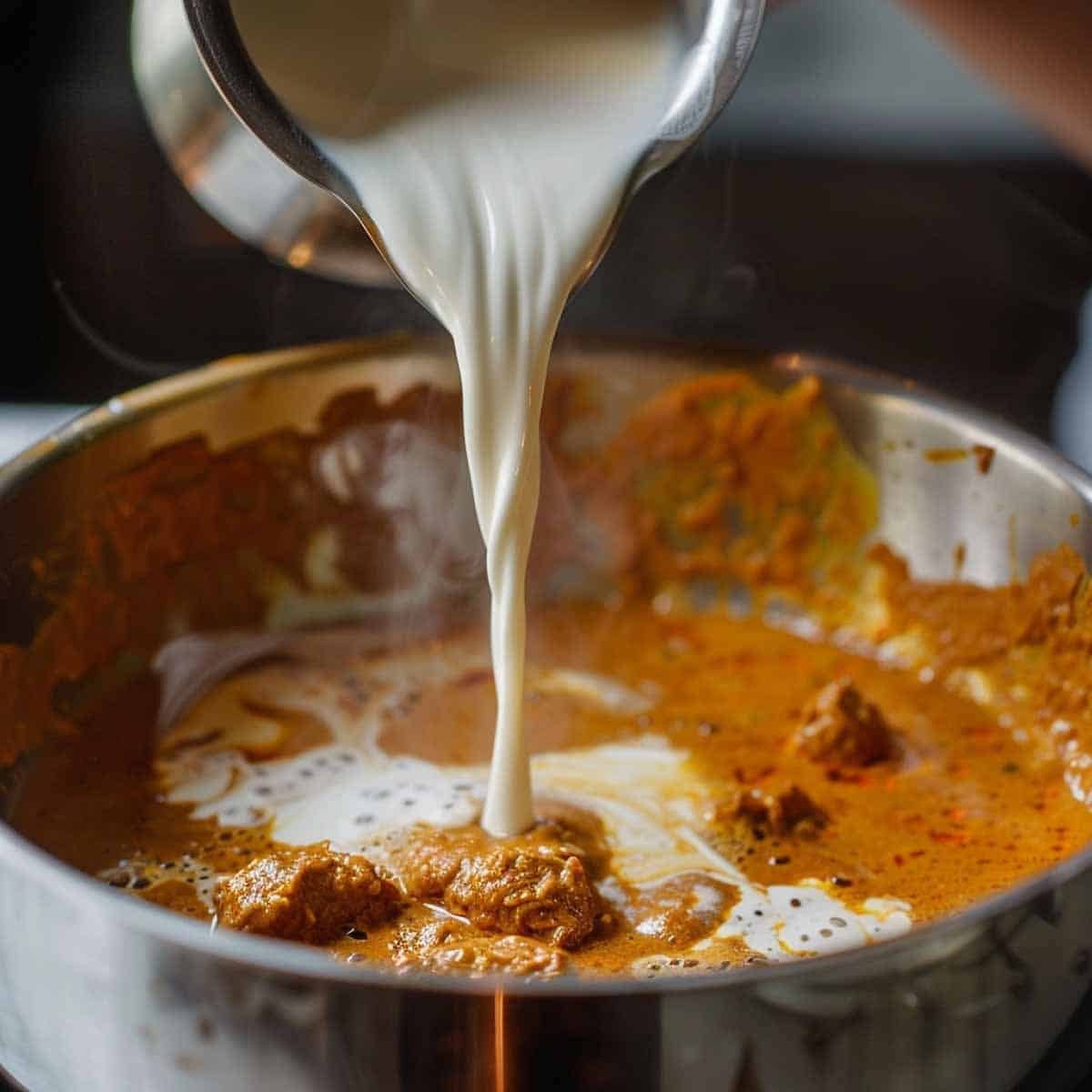
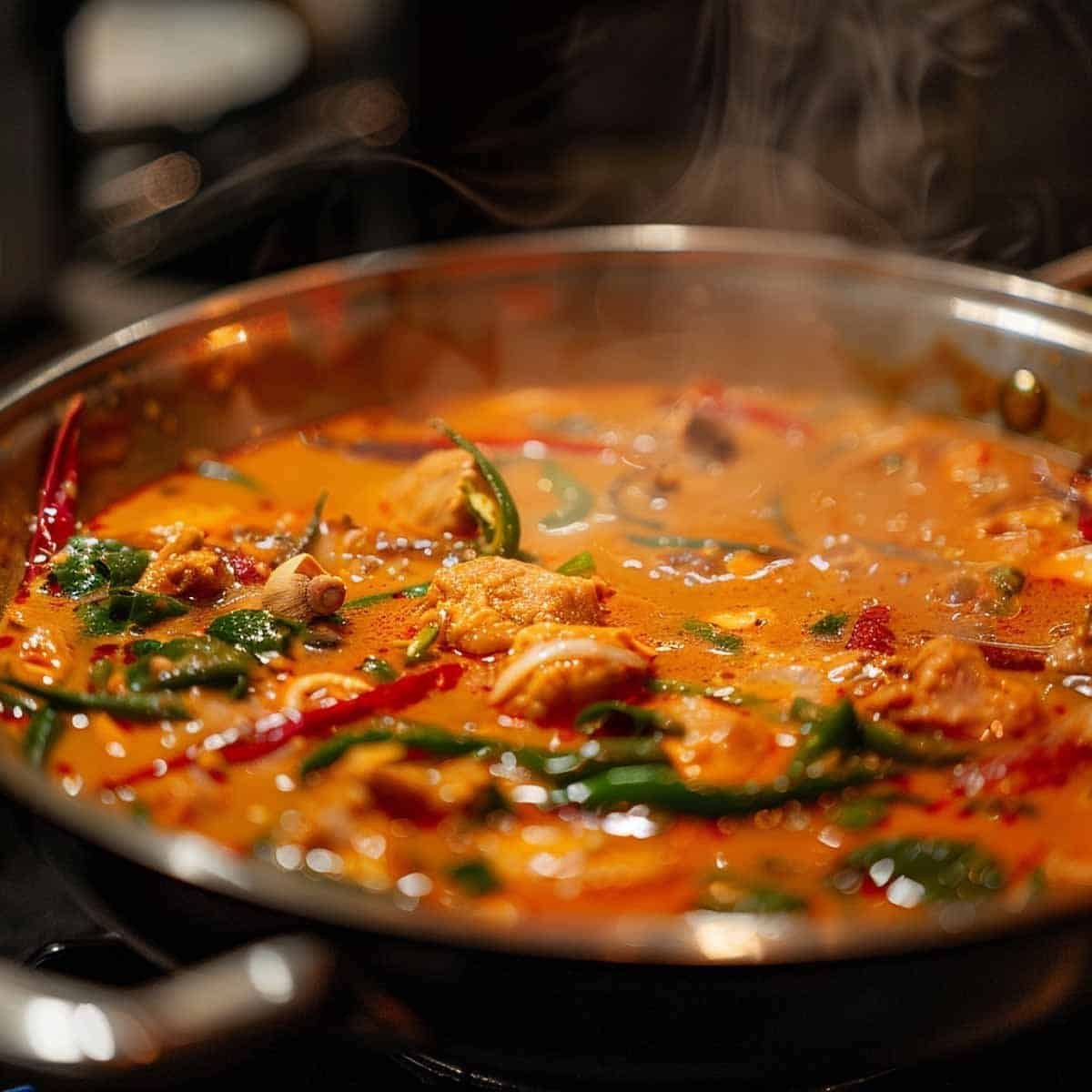
Finishing Touches
Stir in the fresh basil leaves before serving, letting them wilt slightly. Serve the red curry hot over a bed of jasmine rice garnished with extra basil leaves for added freshness.
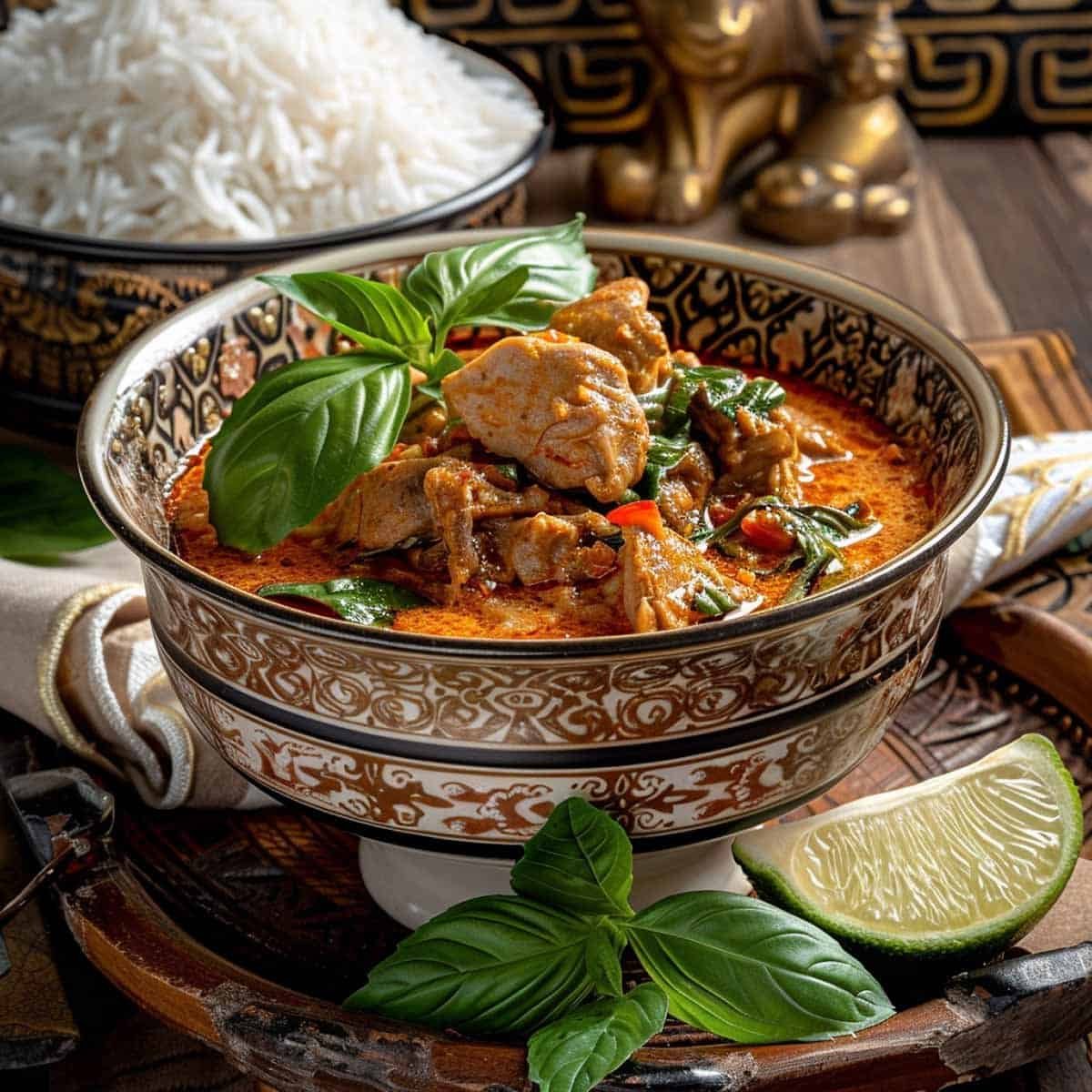
Tasting Notes for Thai Red Curry (Gaeng Phed)
Visual
- Color: Rich, vibrant red with a creamy, glossy texture. The curry sauce is thick and smooth, often flecked with chunks of vegetables and tender protein, such as chicken or tofu. The red hue comes from a blend of red chilies and spices, making it visually appealing and hinting at its robust flavor.
Aroma
- Fragrant and Spicy: The aroma is a compelling mix of aromatic spices, including lemongrass, kaffir lime leaves, and galangal. The rich scent of red curry paste, with its blend of red chilies, garlic, and shallots, is prominent. There's a subtle hint of sweetness from coconut milk, which balances the spicy and herbal notes.
Taste
- Complex and Balanced: The flavor profile of Thai Red Curry is a harmonious blend of spicy, sweet, and savory elements. The heat from the red chilies is noticeable but manageable, making the curry vibrant without being excessively fiery. The coconut milk adds a creamy sweetness that balances the heat and complements the spices. The curry paste provides depth with its mix of coriander, cumin, and sometimes a touch of tamarind for added tanginess. Fresh herbs and vegetables add layers of flavor and freshness.
Texture
- Creamy and Smooth: The texture of the curry sauce is creamy and velvety, thanks to the coconut milk, which coats the ingredients beautifully. The vegetables, such as bell peppers, bamboo shoots, or eggplant, remain tender-crisp, satisfyingly contrasting the smooth sauce. Any added protein, like chicken or tofu, is typically tender and well-cooked, absorbing the curry's flavors.
Heat Level
- Moderate to Hot: The heat level is typically moderate to hot, depending on the amount and type of red chilies used in the curry paste. While the spiciness is present and noticeable, it is balanced by the richness of the coconut milk, making it manageable for most palates. The heat lingers but does not overpower the other flavors, providing a pleasant, warming sensation rather than an intense burn.
Thai Red Curry offers a delightful combination of vibrant colors, aromatic spices, and a balanced, rich, and complex flavor profile.

Thai Red Curry (Gaeng Phed)
Ingredients
- 2 tablespoon vegetable oil
- 2 tablespoon red curry paste
- 1 lb chicken breast thinly sliced (or tofu for a vegetarian option)
- 1 can 14 oz coconut milk
- 1 cup chicken broth or vegetable broth for a vegetarian option
- 2 tablespoon fish sauce or soy sauce for a vegetarian option
- 1 tablespoon brown sugar
- 1 cup bell peppers sliced
- 1 cup bamboo shoots drained
- 4-5 kaffir lime leaves torn into pieces
- 1 cup fresh basil leaves
- Cooked jasmine rice for serving
Instructions
- Preparing the Base:In a large saucepan, heat the vegetable oil over medium heat. Once the oil is hot, add the red curry paste, stirring continuously for 1-2 minutes until fragrant. This step blooms the spices, releasing their essential oils and intensifying the flavor of your curry base.
- Cooking the Protein:Add the sliced chicken breast to the saucepan; stir to coat it with the curry paste. Cook for 5-7 minutes until the chicken is no longer pink. If using tofu, gently stir to avoid breaking the pieces and cook until lightly browned.
- Creating the Sauce:Pour in the coconut milk and chicken broth, stirring well to combine. Bring the mixture to a gentle simmer, allowing the flavors to meld together beautifully. This step is crucial for developing a perfect red curry's rich, creamy texture.
- Adding Vegetables and Seasoning:Add the bell peppers, bamboo shoots, fish sauce, and brown sugar. Stir well, then add the torn kaffir lime leaves. Simmer for another 5-7 minutes until the vegetables are tender but crisp, and the flavors have deepened.
- Finishing Touches:Just before serving, stir in the fresh basil leaves until wilted. Serve the red curry hot over a bed of steamed jasmine rice, garnished with additional basil if desired.
Nutrition
Tips for Authenticity and Customization For ThaiRed Curry (Gaeng Phed)
Using Authentic Ingredients
Using genuine Thai ingredients is key to achieving the authentic taste of Red Curry (Gaeng Phed). Fresh kaffir lime leaves and Thai basil impart unique flavors that dried or substituted herbs cannot replicate. Therefore, using these fresh ingredients is crucial for capturing the true essence of Thai Red Curry. Similarly, high-quality coconut milk creates a creamy, rich base, while traditional fish sauce adds a distinctive umami depth. To begin with, investing in a good red curry paste, ideally from a reputable Thai brand, ensures a robust, spicy foundation. Furthermore, these authentic ingredients elevate the dish, bringing a true taste of Thailand to your kitchen.
Adjusting Spiciness and Flavors
Thai Red Curry (Gaeng Phed) is known for its balance of flavors, but you can easily adjust the spiciness to suit your taste. If you prefer a milder curry, reduce the curry paste to mellow it. Add more red curry paste or a few sliced Thai chilies for those who enjoy an extra kick. To balance the flavors, adjust the fish sauce and sugar to achieve the perfect harmony of salty and sweet, creating a dish that suits your palate.
Substitutions
- Riesling: Its sweetness and acidity balance the spiciness of the Curry beautifully.
- Sauvignon Blanc: This wine's crisp, citrus notes complement the fresh herbs in the curry; likewise, it elevates the dish with its zesty brightness.
- Pinot Noir: Its light body and fruity notes pair well with the complex flavors of the curry; besides, its aromatic profile adds an extra layer of depth to the meal.
Alternative Garnishes
While traditional Thai basil is a staple Thai Red Curry (Gaeng Phed) garnish, several other options exist. Fresh cilantro adds a bright, citrusy note, while finely sliced green onions provide a subtle flavor and a pop of color. For a touch of crunch, sprinkle roasted peanuts or cashews on top. Lime wedges on the side offer a zesty contrast that enhances the curry's flavors. Experiment with these garnishes to add your unique twist to the dish.
Thai Red Curry (Gaeng Phed) : Pairing, Serving, and Storage Tips.
Pairing Suggestions and Side Dishes
- Steamed Jasmine Rice: Its subtle flavor and fluffy texture complement the rich, spicy curry.
- Thai Cucumber Salad: A refreshing, tangy side that balances the curry's heat.
- Spring Rolls: Crispy on the outside and packed with fresh vegetables, they provide a delightful contrast.
- Pad Thai: The savory-sweet flavors and chewy noodles make a perfect accompaniment.
Wine Pairing:
- Riesling First, Riesling's sweetness and acidity balance the spiciness of the curry beautifully.
- Sauvignon Blanc Next, Sauvignon Blanc's crisp, citrus notes complement the fresh herbs in the curry. Likewise, it elevates the dish with its zesty brightness.
- Pinot Noir Lastly, Pinot Noir's light body and fruity notes pair well with the complex flavors of the curry. Besides, its aromatic profile adds an extra layer of depth to the meal.
- Leo Super: First, Leo Super's light, crisp taste enhances the curry's flavors.
- Singha: Similarly, a classic Thai beer with a clean, slightly bitter finish pairs well with spicy dishes. This pairing helps to mellow the heat and complements the flavors effectively.
- Chang Lastly, Chang is smooth and slightly sweet, balancing the heat of the curry.
How to Serve
Begin by serving Thai Red Curry (Gaeng Phed) hot, spooned over a bed of steamed jasmine rice, which soaks up the flavorful sauce beautifully. Following that, arrange the curry in a shallow bowl or plate, garnished with fresh basil leaves for a vibrant touch. Additionally, accompany the dish with lime wedges on the side, allowing each diner to add a squeeze of fresh citrus as desired. Finally, for a complete Thai dining experience, serve with a side of Thai cucumber salad and crispy spring rolls, ensuring a delightful contrast of textures and flavors.
Reheating Options
To reheat Thai Red Curry (Gaeng Phed), place it in a saucepan over medium heat, stirring occasionally until warmed. Alternatively, you can microwave individual portions in a microwave-safe dish, covering loosely to prevent splatters. Heat on medium power in 1-minute increments, stirring between each, until hot. Adding a splash of coconut milk or water can help restore the curry's consistency if it has thickened during refrigeration.
Make-Ahead and Storage
Thai Red Curry (Gaeng Phed) can be made ahead of time and stored for later use. Once cooked, allow the curry to cool to room temperature before transferring it to an airtight container. It can be refrigerated for up to 3 days or frozen for 2 months. To reheat, thaw the frozen curry overnight in the refrigerator and then follow the reheating options above. This make-ahead method ensures a quick and delicious meal on busy days. Visit foodsafety.gov for more information.
Required Kitchen Equipment for Thai Red Curry (Gaeng Phed)
- Large Saucepan: This is used for cooking the curry base and simmering the ingredients.
- Cutting Board: To prepare the vegetables and protein.
- Chef's Knife: This is for efficiently slicing and chopping ingredients.
- Measuring Spoons: To accurately measure the curry paste and other seasonings.
- Wooden Spoon: This stirs the curry and ensures even cooking.
Frequently Asked Questions for Thai Red Curry (Gaeng Phed)
Absolutely! Red Curry (Gaeng Daeng) is versatile. For a vegetarian option, you can use shrimp, beef, pork, or a variety of vegetables. Adjust cooking times accordingly to ensure the protein is cooked through.
To reduce the spiciness, use less red curry paste or add coconut milk to dilute the heat. You can also add a bit more sugar to balance the flavors.
If kaffir lime leaves are unavailable, you can use lime zest. While it won't replicate the exact flavor, it will add a similar citrusy note.
Yes, Thai Red Curry (Gaeng Daeng) can be made ahead and stored in the refrigerator for up to 3 days. This not only saves time but also allows the flavors to intensify, making the dish even more enjoyable.


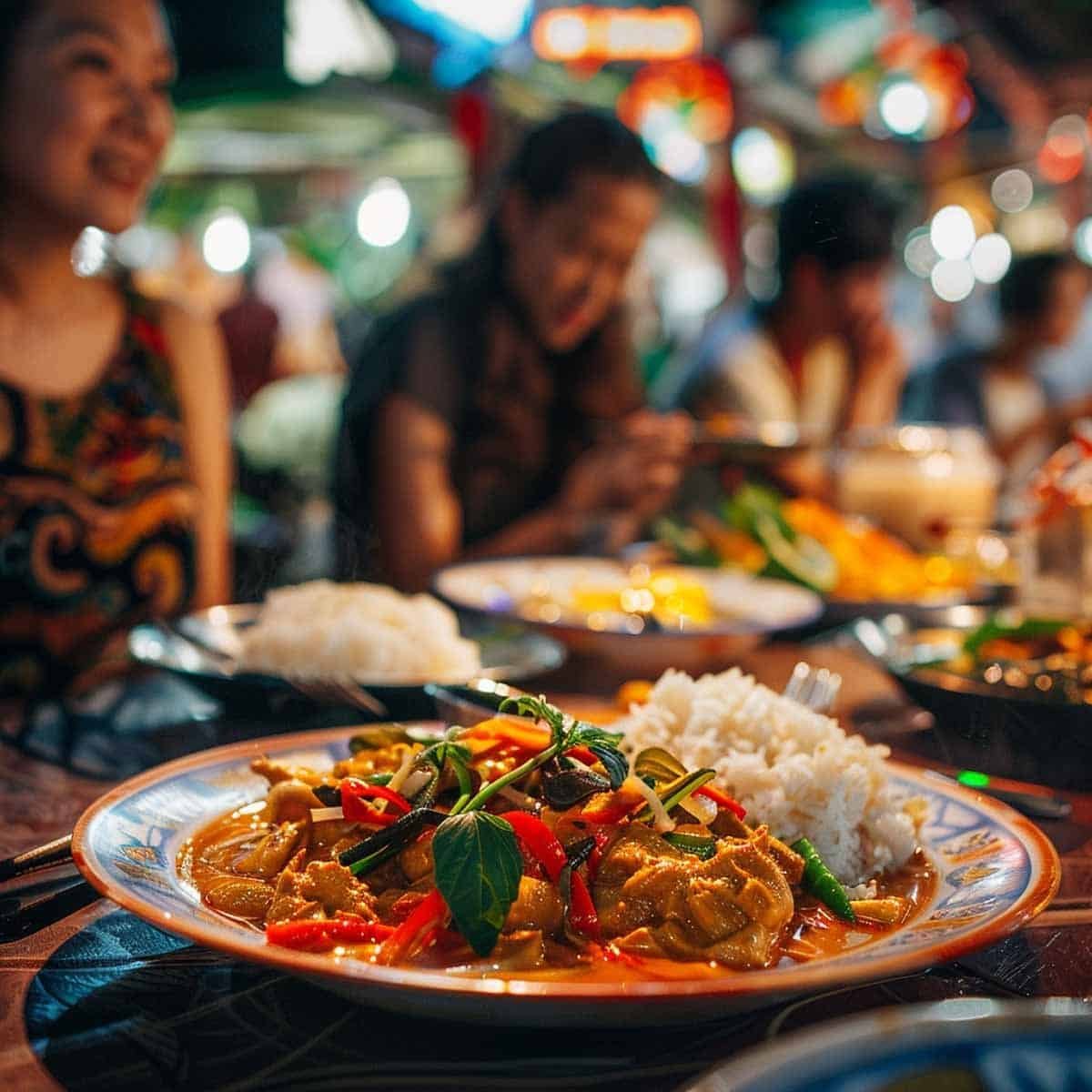


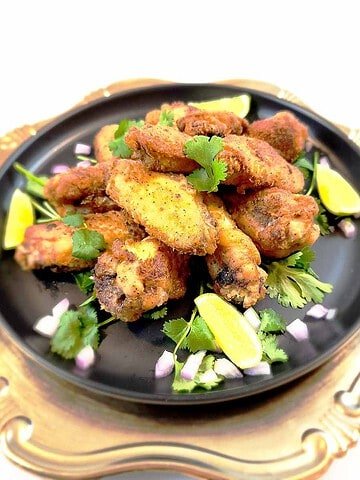

Leave a Reply